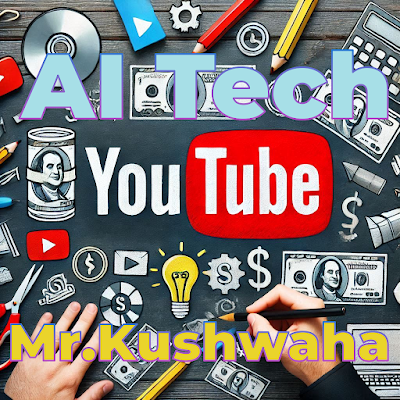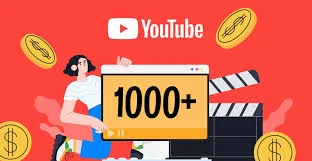Learn how to create engaging cartoon kahani videos on YouTube using the best AI tools and software for fast video production. Discover trending techniques, software, and AI automation for storytelling success.
How to Create Cartoon Kahani Videos on YouTube: Best AI & Software for Fastest Video Making
Introduction
Creating cartoon kahani (story) videos on YouTube is a great way to engage audiences, especially kids and storytelling enthusiasts. With advancements in AI and animation software, making high-quality animated videos has become faster and more efficient. In this guide, we will explore the best tools, AI software, and step-by-step methods to create cartoon kahani videos on YouTube quickly.
Why Cartoon Kahani Videos are Popular on YouTube
- High Engagement Rates – People love animated storytelling.
- Monetization Opportunities – Earn through ads, sponsorships, and memberships.
- Easier to Produce with AI Tools – No need for complex animation skills.
- Less Competition – Compared to live-action videos.
- Viral Potential – Unique storytelling can make videos go viral.
Step-by-Step Process to Create Cartoon Kahani Videos
1. Plan Your Story
A well-structured story is the backbone of a successful cartoon kahani video. Follow these steps:
- Choose a Theme – Moral stories, fairy tales, historical tales, or mythology.
- Create a Storyboard – Sketch out key scenes.
- Write a Script – Narration, dialogues, and visual cues.
- Define Characters & Backgrounds – Main characters and settings.
- Decide the Duration – 3 to 10 minutes is ideal.
2. Choose the Right Animation Software & AI Tools
To speed up the creation process, use AI-powered animation software:
Best AI & Software for Fastest Video Making
1. Toonly (Visit Website)
- Drag-and-drop animation
- Pre-built characters and backgrounds
- Voice-over integration
2. Vyond (Visit Website)
- AI-powered character animation
- Auto lip-syncing
- Best for professional storytelling
3. Animaker (Visit Website)
- AI-assisted animation
- Pre-built assets and text-to-speech feature
4. Doodly (Visit Website)
- Whiteboard animation software
- Great for educational and explainer videos
5. Adobe Character Animator (Visit Website)
- Real-time character animation using AI
- Motion capture feature
6. Cartoon Animator 5 (Visit Website)
- 2D animation with AI automation
- Auto lip-syncing & facial expressions
7. Powtoon (Visit Website)
- AI-based animated video maker
- Customizable templates
3. Create Characters and Backgrounds
- AI Character Design Tools:
- Artbreeder – AI-generated unique characters.
- Runway ML – AI-assisted creative visuals.
- Reallusion Character Creator – Professional character design.
- AI Background Generators:
- Canva – Quick and easy backgrounds.
- Adobe Photoshop – Advanced customization.
4. Add Voiceovers and Sound Effects
- Use AI Voiceover Tools:
- Murf AI – Realistic AI-generated voiceovers.
- Speechelo – Converts text into human-like speech.
- NaturalReader – Multiple voice options.
- Add Background Music & Sound Effects:
- Epidemic Sound – Royalty-free music.
- AudioJungle – Extensive sound effect library.
- Zapsplat – Free & premium sound effects.
5. Edit and Finalize the Video
- Use Professional Editing Software:
- Filmora – Beginner-friendly.
- DaVinci Resolve – Professional-grade.
- Adobe Premiere Pro – Industry standard.
- Final Touches:
- Add effects, transitions, and captions.
- Optimize audio levels.
6. Upload and Optimize for YouTube
- Use SEO Keywords in Title & Description:
- "Cartoon Kahani video making"
- "YouTube animated stories"
- "AI animation software"
- Create an Eye-Catching Thumbnail:
📌YouTube vs. Facebook vs. Instagram
📌YouTube vs Facebook: Which is Better for Online Earning?
📈 Advanced Tips: Boost Views & Earnings with Cartoon Kahani Videos
Creating cartoon kahani videos is just the beginning. Let’s now explore how to optimize these videos for views, engagement, and revenue on YouTube.
🪙 1. How to Monetize Cartoon Kahani Videos on YouTube
Once your videos start getting views, it's time to monetize. Here are ways to earn from animated story videos:
✅ YouTube Partner Program (Ad Revenue)
-
Requires 1000 subscribers and 4000 watch hours
-
Cartoon kahani videos for kids, mythology, or moral stories usually get longer watch time
-
Use engaging thumbnails and titles to boost click-through rate (CTR)
✅ Channel Memberships & Super Thanks
-
Once eligible, offer perks like behind-the-scenes or exclusive stories
-
Ideal for a loyal storytelling audience
✅ Affiliate Marketing for Animation Software
-
Add affiliate links of tools like Toonly, Vyond, Murf AI in your video description
-
Mention the tools during your video creation process
✅ Sponsored Content
-
If your channel grows in a niche like children's stories or animated mythologies, brands may pay you for sponsored content
✅ Sell Your Own Courses or E-books
-
Teach others how to create cartoon story videos using AI
-
Link to Gumroad, Payhip, or Teachable
📤 2. Optimize Uploading for Maximum Reach
When uploading a cartoon kahani video, YouTube SEO is critical.
Title Optimization
-
Include the main keyword like:
✅ “Moral Cartoon Kahani for Kids | Made with AI Animation Tools”
Description Tips
-
Add keywords like:
“This cartoon kahani was made using AI video maker tools like Vyond, Murf AI, and Toonly. Learn how to make animated story videos on YouTube.” -
Link your tools and social media pages
Tags
Use these tags:
-
cartoon kahani -
animated moral story -
YouTube story video AI -
text to speech video -
kids cartoon story in Hindi
Thumbnails
-
Design eye-catching thumbnails using Canva
-
Use bright colors, emotional expressions, and text in Times New Roman
📌ChatGPT vs. Google Gemini
🎞️ 3. YouTube Shorts vs. Long-Form Stories
Shorts:
-
Use for 60-second storytelling clips
-
Quick moral takeaway or a dramatic scene
-
Good for virality and subscriber growth
Long-Form:
-
For complete kahani with narration and character development
-
Best for watch time and monetization
🔥 Pro Tip:
Create a short version of your long video and add an end-screen to redirect viewers to the full version.
🧠 4. Trending Cartoon Kahani Formats
To stand out, create content in unique formats:
| Format | Description | Tools to Use |
|---|---|---|
| Mythological Kahani | Short stories from Ramayana, Mahabharata | Vyond, Toonly, Murf AI |
| Folk Tales & Panchatantra | Moral stories with animal characters | Doodly, Animaker, Powtoon |
| Modern-Day Morals | Social messages using contemporary characters | Cartoon Animator 5, Canva, Speechelo |
| Interactive Kahani | "Choose your ending" style interactive videos | Adobe Character Animator |
These formats attract both children and adults looking for nostalgia, values, and fun.
💡 5. Build a Storytelling Community
YouTube rewards channels that build engaged communities.
📬 Community Tab
-
Post character polls, behind-the-scenes clips, or ask viewers to suggest the next kahani topic.
💬 Engage in Comments
-
Reply using character names or emojis to keep your theme consistent.
-
Pin top comments that contribute positively.
🤝 Collaborations
-
Team up with other YouTube creators who make kids content or AI-based videos
-
Do cross-promotions or make combined animated kahani
🧰 Additional AI Tools to Improve Productivity
Here are a few bonus AI tools to further speed up cartoon kahani creation:
1. ChatGPT (OpenAI)
-
Write full scripts, moral endings, or character dialogues
-
Generate storyboard outlines in seconds
2. Pictory AI (Visit)
-
Converts blog content to animated video
-
Ideal for repurposing your blog into a video format
3. Synthesia.io (Visit)
-
AI avatars narrate your story
-
Great for voice-led stories without using your voice
4. Lumen5 (Visit)
-
Drag-and-drop AI video editor with prebuilt scenes
-
Syncs narration with animation instantly
🎨 Free Resources for Cartoon Kahani Creators
Here’s a list of free and freemium tools you can explore:
| Resource Type | Name/Website |
|---|---|
| Background Music | Pixabay Music |
| Sound Effects | Zapsplat |
| Stock Videos | Pexels Videos |
| Animation Scenes | Animaker Free Library |
| Fonts & Graphics | Google Fonts + Flaticon |
🔁 Repurpose Your Cartoon Kahani Content
Maximize your efforts by sharing your videos across platforms:
-
Instagram Reels: Short scenes with music
-
Facebook Video: Ideal for family audiences
-
Pinterest: Post thumbnails with story links
-
Blog Embed: Write a story blog and embed your YouTube video
This strategy boosts discoverability and helps you gain more subscribers and traffic from multiple sources.
📌How to participate in Cryptocurrency Airdrop Mining
📌How to Build Multiple Streams of Income Online
✅ Final Checklist Before Publishing
Here’s your publishing checklist for each cartoon kahani video:
-
Engaging script with moral or surprise ending
-
Voiceover added using AI tool (Murf or Speechelo)
-
Background music and SFX synced
-
Clean transitions and captions added
-
Title, tags, and thumbnail SEO-optimized
-
Schema markup + ALT text added on blog
-
Video shared across social media
Conclusion
Creating cartoon kahani videos on YouTube is now easier with AI-powered tools. By following the right steps and using the best animation software, you can create engaging storytelling content efficiently.
🚀 Start your YouTube storytelling journey today and bring your imagination to life!
#CartoonKahani #YouTubeCartoonStory #AnimatedStoryVideos #AIAnimationSoftware #CartoonVideoMaker #StorytellingWithAI #CreateCartoonVideos #YouTubeKidsContent #MoralStoriesInHindi #AIStoryVideo










.png)
.png)



.jpeg)
.jpeg)
.jpeg)
.jpeg)
.jpeg)



